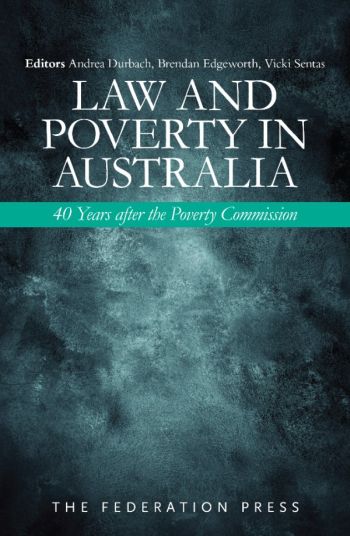
The publication of the Poverty Commission's Law and Poverty in Australia Report in 1975 was a landmark event in the history of Australian law reform. Since that time, and as Australia has become an increasingly unequal society, there has been no systematic overview of the inter-relation between law and poverty in Australia. This book attempts to fill the gap by bringing together a range of experts from civil society, the legal profession and academe, and from a number of disciplines including law, social science and criminology.
The book provides an inventory of progress made over the past four decades with regard to the many proposals contained in the original Law and Poverty Report. The overall conclusion is that the scorecard is uneven. Substantial implementation of the reforms has occurred in many areas, such as consumer and tenancy law. Despite initial progress in other areas, such as tax law, legal aid and social security, there has been deterioration.
The book highlights some important aspects of poverty and law not contained in the original Report: the intersection of the experiences of LGBTI people, poverty and law; the international dimension of law and poverty in light of globalisation; and the critical importance of tax rules in relation to poverty.
The book concludes by identifying critical areas for reform to address the legal problems that poor people confront. They include: cuts to legal aid and community legal centre funding; security of tenure for residential tenants; redistribution of the tax burden; regulation of the power of government agencies, such as social security and the police; and greater security in the sphere of employment law.